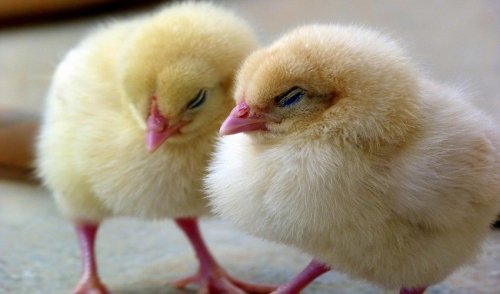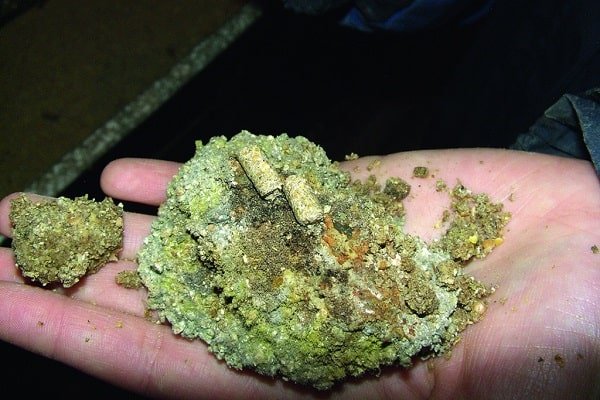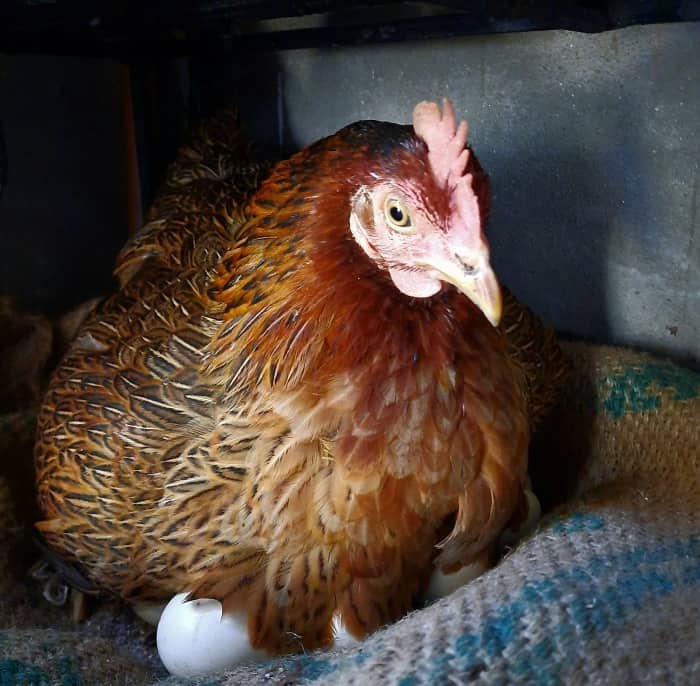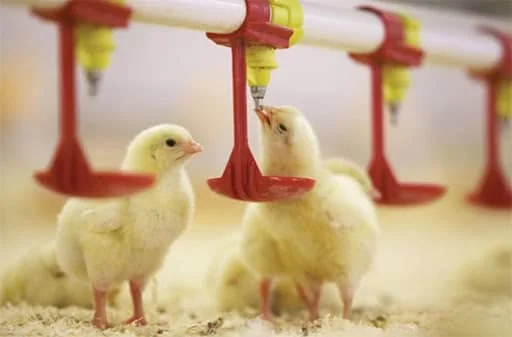How to reduce poultry mortality and make more profits

If your chickens are dying unnecessarily and you are looking for ways to reduce poultry mortality in your farm, you are welcome to continue reading.
Firstly, you and I can agree that dying birds are a huge economic loss to any poultry farmer.
The higher the number of birds that die in your poultry farm, the lower your revenue and ultimately, your profit.
As a result, a good farmer will do all he can to reduce the rate of poultry mortality on his farm.
What are the common causes of sudden death in poultry?
There are a lot of reasons for early chick mortality in poultry farming.
Poor feed and improper hygiene can lead to the early death of chicks.
Stress and lack of proper ventilation in the brood house are also common reasons for high poultry mortality.
In addition, the quality of chick you stock your farm with will determine their survival in your farm.
For instance, If you stock chicks with a yolk sac infection, then early mortality is likely to be high.
However, after one week of stocking, mortality is more likely to be the result of predation, disease or suffocation.

What level of poultry mortality should I expect?
It is worth looking at mortality in the flock as two separate ‘time periods’:
• Mortality in the first week after placement
• Mortality from the second week onwards.
Mortality during the first week is often a result of the quality of day-old chicks, which is often outside the control of the farm.
While a mortality rate of up to/around 1.5% during this first week is not unusual, it is obviously worthwhile taking steps to minimize your losses.
Throughout the life of the flock, you should aim to keep mortality as low as possible.
After the first week, if the mortality rate rises above 1% in any single day you must assess the cause and address it.
You should also consider contacting your vet or poultry advisor for further advice.
What can I do to reduce poultry mortality in my farm?
If your poultry farm is recording a high rate of poultry mortality, that should make you worry.
You are losing a lot and should not expect a reasonable profit after the sale of your poultry products.
The costs of buying the chicks, transportation, and feeding before their death are economic losses to avoid.
Let’s look at some of the practical steps you can take to reduce mortality in your poultry farm.
1. Buy quality chicks from trusted suppliers

This is usually the beginning of problems for most farmers.
When you buy poor quality and unhealthy chicks, you risk having a high mortality rate in your poultry farm.
Most of the health problems that affect birds are as a result of a poor genetic background or early life.
A lot of unhealthy and poor quality chickens are the product of poor parents.
Some egg hatcheries are not reputable as they raise poor parent stocks to produce fertile eggs.
Many buy eggs from bad and problematic parent stock farms at giveaway prices, mostly to make more profit.
There are some poultry farmers who never make any attempts to know the source of eggs of a particular hatchery.
This is a really bad practice.
If you are a victim of this practice, you need to stop neglecting important issues that affect your farm.
You end up buying chicks from you know nothing about, hence raise problematic chicks that ruin your investment.
The best practice is to know the source of eggs of the hatchery that supplies chicks to you.
Also, know the history of the birds that lay those eggs.
In addition, inspect the health status of each bird before transporting them to your farm.
2. Protect the flock from extreme cold
Do whatever you can to avoid exposing your birds to extreme cold conditions.
Extreme cold can wreak havoc in your poultry farm.
You can wake up one morning to find a lot of your chickens dead overnight.
The best way to protect chickens from extreme cold is to supply heat during very cold weather.
You can also design the pens in such a way that you do not expose your birds to extremely cold conditions.
3. Reduce the risk of suffocating the chicks to death.
Birds can easily suffocate and die when something triggers them to move to a tight corner, forming a heap.
The birds at the bottom of the heap can suffocate or suffer a fatal injury.
Death of chickens a result of suffocation can occur at any age in the bird’s life.
However, you can easily avoid some causes than others.
First, you need to ensure that the temperature and humidity in the brooding house are at the right levels.
Apart from having the right levels, you must ensure that temperature and humidity is uniform throughout the pen.
If one part of your pen is too cold for instance, they may huddle and suffocate themselves in an attempt to stay warm.
A simple tip to help you prevent your birds from suffocating to death is to centralize the heat source in the pen.
When the heat source is in the middle, the birds will not need to heap up in one corner of the pen and suffocate.
Secondly, try to avoid sudden loud noises around the birds.
A sudden loud noise can cause the birds to panic and pack together.
Be aware of any local sources of loud noises that could startle the birds, such as low flying aircraft.
If your farm is close to an airbase, you can discuss with the management to stop aircraft from flying low over your farm.
The third way to reduce the risk of suffocation is to control or keep predators away from your farm.
This can help to avoid the risk of panic-induced gathering that can lead to suffocation.
4. Always wash drinkers and replace the leftover water
Make sure you always wash the drinkers or drinking trough of your birds every morning.
It is also essential to discard leftover water and replace with clean, fresh water.
Never use water from a stream or river that you don’t know its source.
Also, avoid filling your drinkers with chlorinated water.
Ensure that you rinse off the drinkers properly to avoid re-contaminating the freshwater with soaps or detergents.
When discarding leftover water and feed, do so very far away from the pen.
This way, you will be preventing soldier ants from invading your farm and killing your chickens.
5. Serve water before feeds
Water is very important in the growth and development of birds.
This is also true for every animal.
The reason for this tip is to prevent chickens from stampeding themselves as they struggle for food.
Naturally, chickens tend to drink water slower than they peck on their feed.
By placing water first, you will divert the attention of some of the chickens to focus on drinking water.
By the time you introduce the feed, the struggle will not be much as only a few will be eating while others are drinking.
This way, you can reduce the risks of poultry mortality as a result of stampeding.
6. Prevent diseases from causing mortality in your poultry farm
Some diseases have the potential to wipe out your entire flock at the same time.
There are diseases that may not cause the death of any birds but may affect feed conversion ratio of the birds
It may get as bad as affecting the weight of the chicken at harvest, the carcass quality and also egg production.
As part of your planning make sure to find out what diseases may present a risk to the birds in your farm and learn the key symptoms.
Get advice from your vet or poultry advisor.
Here is a guide about poultry diseases, symptoms and how to prevent them.
Some key factors that can increase the risk of disease include
- the number of birds on the farm
- keeping different species of birds together
- your rotational management of the land
- feed type and source
- stress levels
- breed type and so on.
7. Avoid serving poultry birds mouldy feeds

In trying to cut cost, your risk the life of your birds by feeding them mouldy feeds.
Mouldy feeds can be dangerous and poisonous to your chickens.
Feeding your birds with this kind of feed is really risky.
The birds can easily fall sick or even contract a disease from the bad feed.
Mouldy feeds are what they are, bad and dangerous, and you must dispose of them immediately.
To prevent yourself from having mouldy feeds in your farm, always keep the feeds away from water.
Also, avoid storing your feed in storage rooms with very high humidity.
Another tip is to order for the quantity of feed that your birds will finish before the end of its shelf life.
Always look at the expiry dates on the feed before buying.
When you store feeds properly in dry, moderate temperature conditions, the shelf life of the poultry feed can be up to 4 months
8. Keep predators away from your poultry farm

Just about every predator out there will take poultry if they get the chance.
Dogs, cats, hawks and owls will all kill birds.
In the same way, rats and snakes will take chicks.
You need to determine what the main predator threats are on your farm and take the necessary preventative action before any problems occur.
Where predators are a risk you must shut your birds in at night.
You must also ensure that the poultry house is predator-proof, preventing predators from getting in.
Remember that a house that keeps birds in does not necessarily keep predators out.
Predators may try to dig into the poultry house from underneath or gain access through the roof.
Even small gaps in the house itself or climbing plants that surround the farm can be a risk.
You cannot imagine how far predators can go in squeezing themselves through to get to your birds.
A good way to keep bigger predators like cats and dogs from the range area is by using electrified fencing.
Use a seven or nine strands electric fence with alternately living and earthed wires to deter predators.
For flying predators like hawks, you can crisscross a thin cord over the area so that the predators find it difficult to fly in and out.
A good cord for this is the cord used in making beads.
The cord is strong enough for this job.
Do well to close all holes around the farm, and always monitor your farm for signs of predators.
Make sure you install strong iron mesh nets around the pens and apply predator repellents.
9. Strictly follow medication and vaccination schedule strictly
It is a good farm practice to vaccinate every new flock of birds you stock in your farm.
This will help to prevent an endemic disease outbreak which can lead to loss of birds in the poultry farm.
Immunize your birds against some deadly poultry diseases like Newcastle Diseases (ND), Fowl Pox, Fowl Typhoid, Gumboro Disease etc.
Most hatcheries will likely immunize their chicks before selling.
Do confirm from them so that you don’t go ahead and overdose he chicks.
You also need to get the right vaccination and medication schedule of the poultry species you’re raising.
Medication such as dewormer and antibiotics are very important to the health of your chickens and other poultry species.
So, you have to keep a good stock of the medicines and vaccines you need to reduce poultry mortality.
10. Prevent ammonia build up in the litter system of poultry farming

Ammonia builds up in the pen when the litter is wet or when you leave them in your pen for a very long time.
A wet and dirty litter emits ammonia gas which can be very dangerous to birds.
When the ammonia level in the air exceeds 25 ppm, it may result in a lot of stresses in the birds.
Problems like irritation of the eyes and nasal membrane, poor feed intake, and slow growth rate may result.
Other infections such as coccidiosis and respiratory diseases like coryza, bronchitis etc may even attack the birds.
To prevent this, always remove wet or caked litters from pens and replace with new litters as soon as possible.
This will prevent your chickens, turkeys and quails from mortality due to choking or other respiratory problems.
11. Maintain proper hygiene and sanitation

Diseases can enter the farm through the workers, feed, water, new birds, visitors and/or wild or stray birds.
This can occur when you don’t take poultry health management and biosecurity very seriously.
Many farmers do not even care to take stock of the number of birds on their farm.
That way, when a bird dies, they will not know until several days after the carcass is stinking.
When you don’t take measures to protect your farm, diseases can enter your farm and infect your birds.
It is therefore very important for you to maintain proper hygiene and sanitation in and around your poultry farm.
12. Supply sufficient feed to your birds
When you do not feed your birds properly, they cannot grow well and produce excellently.
Underfed birds will always have low body weights and poor immune responses.
As a result, birds can easily fall sick and die.
So ensure you give enough feed and avoid overfeeding, which could lead to another problem.
Tips for observing and diagnosing poultry birds
Observing and diagnosing your birds is something every poultry farmer must do every day.
The moment you enter your poultry house in the morning, ensure you observe your birds before feeding them.
You should look out for the following when observing the birds on your farm:
- Their activeness: Are they moving towards your side or do not show any sign of recognizing you’re present? If they are active, move to the next thing.
- Check their faeces for abnormality: Check if your birds’ faeces are different from the normal, which should be grayish faeces with a white cap. If you suspect anything different from normal, like blood-stained faeces, yellowish or greenish faeces, then something is definitely wrong with those birds somewhere.
- Check for weak birds and/or dead birds and remove them from the pen. Observe the weak or sick birds in order to know if the weakness was due to an accident.
- Check for any birds that might have been pecked, thereby having wounds on the skin. If you detect any, segregate such from the flock immediately.
There you have it, the 12 ways to reduce poultry mortality in your farm.
Did I miss any tip? Please share with us in the comment section.
Which of these tips are you going to implement on your farm immediately?
Leave a comment, like and share this article on social media.






Thank you so much for this informative piece.
I tried joining the WhatsApp group but it says filled up. Is there another one?
You can try again.
Tank you but when poultry hv problems on legs dat they can not move or walk, what do I apply to them
It depends on what happened to the feet. Is it an external injury or they are unable to walk because they are sick?
Maaaaan, you are goooooood. I appreciate your efforts. Godbless.
Thanks a lot, Shehu.
Thank you so much for this insight, this is so profound and educative.
You are welcome.
Thank you so much for the information very clear and practical.From now onwards am a champion in poultry farm management.
Awesome! That’s the spirit.
This is nice guidance. We had over 300 mortalities on our farm and don’t know the cause. Please can you help out? I also tried joining the WhatsApp group but the information there says it’s full, please is there any other account?
You can try again and interact with other farmers in the group.
Hye sir, I’m a student. Next year I plan to do this business. Is it good idea or I need little more time to start up this business?
It’s a good one if you are properly guided.
This was very helpful God bless you all
Can I change my broilers feed from starter to finisher at 4weeks?
Yes. You can feed your broilers with starter feed and then grower feed before switching to the finisher in the 4th week.
transforming education
Thanks for the great information given.Jah blessings be upon you
Thanks a lot.
Thank you this has been extremely helpful, My name is Carmen and I live in Grenada in the Caribbean. I have noticed that when I change the feed from broiler grower crumbs to broiler grower pellets they die, Please advise
It’s due to cocci. anytime you change feed even if it’s the same brand but different texture it’s required to treat the birds using an anti-cocci for at least 3 days while continuing feeding them with the new feed. If you want to be guided on how to do this, please send an email to [email protected].
Your lessons are are very understanding. Thank you and GOD bless you…
Thanks for the compliment.
Very good and Educating, thanks. But pls tell us d name of vaccines we should use for our birds
Will write about that soon.
It was wonderful reading this article, so educating. But you should have also prescribe some suitable vaccine for different diseases
Please bear with me, I will do that a subsequent article. Cheers
I will always keep the heat source at the center of the brooding room
Fantastic! That’s a good way to keep the heat evenly spread.